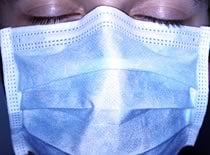 Posted by: Dr. Mercola
Posted by: Dr. MercolaNovember 10 2009 |
flu, influenza, swine flu, swine flu vaccine, flu vaccine, vitamin D.Many countries are pouring millions into orders for swine flu vaccine from pharmaceutical companies. But one country is taking a different approach.
The Irish Independent reports that the some Canadian provinces have suspended the 'normal' seasonal flu shots for anyone under 65 in response to a recent study there. However, the vaccine suspensions do not apply for people over 65.
The study suggests that people vaccinated against seasonal flu are actually twice as likely to catch swine flu.
But plans vary across the provinces of Canada. Last month, British Columbia announced it is suspending seasonal flu shots for anyone under 65 years old, joining Quebec, Alberta, Saskatchewan, Ontario and Nova Scotia in halting the immunizations.
Quebec's Health Ministry announced it would postpone vaccinations until January, clearing the autumn months for health professionals to focus on vaccinating against H1N1, which is expected to the more severe influenza strain this season.
"By the time the H1N1 wave is over, there will be ample time to vaccinate for seasonal flu," said Dr. Ethan Rubinstein, head of adult infectious diseases at the University of Manitoba.
Other provinces, including Manitoba, are still pondering a response to the research. New Brunswick, one of the lone holdouts, made an announcement in September that it would forge ahead with seasonal flu shots for all residents in October, as originally planned.
Yet according to an even more recent posting by PreventDisease.com, some provinces are still recommending co-administration of both vaccines in as little as 60 days, according to a staggered schedule.
An international panel is currently scrutinising the controversial study's data. Dr Ethan Rubinstein, who has read the study, said it appeared sound.
"There are a large number of authors, all of them excellent and credible researchers," he said. "The sample size is very large, at 12 or 13 million people."
It was back in 1981 that R. Edgar Hope Simpson proposed that a principal cause of seasonal influenza is linked with the deficiency of solar radiation which triggers the production of vitamin D in the skin. Vitamin D deficiency is common in the winter, and vitamin D is crucial in allowing your immune system to defend itself against invading organisms.
In addition to vitamin D, studies have suggested that people who exercise moderately suffer fewer and less severe colds and flu infections.
In a new study, researchers found that when they had a group of mice regularly run on a treadmill over 3.5 months, the animals developed less-severe symptoms when infected with the flu virus.
Additionally, mice that exercised right before flu infection, but not regularly over the preceding months, also showed some protection against severe symptoms -- which in mice means dampened appetite and weight loss. Those benefits, however, were only apparent in the couple days after infection, whereas regular long-term exercise reduced flu symptoms over the whole course of infection.
Sources:
Independent.ie October 26, 2009
Homeland1.com September 29, 2009
CBS News September 25, 2009
PreventDisease.com October 26, 2009
Reuters October 23, 2009


 keep the sick person away from other people as much as possible (see “placement of the sick person”) especially others who are at high risk for complications from influenza
keep the sick person away from other people as much as possible (see “placement of the sick person”) especially others who are at high risk for complications from influenza Avoid close contact (less than about 6 feet away) with the sick person as much as possible.
Avoid close contact (less than about 6 feet away) with the sick person as much as possible. Throw away tissues and other disposable items used by the sick person in the trash. Wash your hands after touching used tissues and similar waste.
Throw away tissues and other disposable items used by the sick person in the trash. Wash your hands after touching used tissues and similar waste. 


